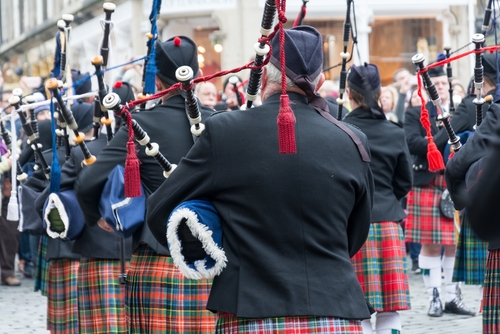St. Andrew’s Day festivities: A guide to Scottish pride and culture
St Andrew’s Day, celebrated on November 30th, is a significant cultural and national holiday in Scotland. It is a day to honor and commemorate the life of Saint Andrew, the patron saint of Scotland. This article explores the history, traditions, and festivities associated with St Andrew’s Day, providing a glimpse into the rich Scottish heritage.
The Origins of St Andrew’s Day
St Andrew, one of the twelve apostles of Jesus Christ, is believed to have been crucified on an X-shaped cross in Greece during the 1st century AD. Legend has it that a Greek monk named St Regulus was instructed by an angel to take some of St Andrew’s bones and travel to the ends of the earth to find a suitable resting place for them. The monk eventually arrived in what is now known as St Andrews, Scotland, and established a shrine in honor of the saint. This event marked the beginning of the association between St Andrew and Scotland.


St Andrew as the Patron Saint of Scotland
St Andrew’s connection to Scotland grew stronger over the centuries, and in 1320, the Declaration of Arbroath declared St Andrew as the patron saint of Scotland. The declaration, a letter sent to the Pope, asserted Scotland’s independence and sovereignty. Since then, St Andrew’s Day has been celebrated as a national holiday, reflecting the country’s deep-rooted pride in its patron saint.
Traditions and Customs
St Andrew’s Day is a time for Scots to come together and celebrate their heritage. Various traditions and customs are observed on this day, adding to the festive spirit. Here are a few notable ones:
Saltire Flag
The Saltire, Scotland’s national flag, is prominently displayed on St Andrew’s Day. The flag, also known as the St Andrew’s Cross, features a white diagonal cross on a blue background. It is a symbol of Scottish identity and is seen fluttering across the country on this special day.


Ceilidhs
Ceilidhs, traditional Scottish social gatherings, are a common feature of St Andrew’s Day celebrations. These events involve music, dancing, and storytelling, providing an opportunity for people to come together and enjoy the lively atmosphere. Ceilidhs often feature traditional Scottish music, such as bagpipes and fiddles, creating a vibrant and festive ambiance. Participants join hands and dance in circles or sets, following the instructions of a caller. It is a joyful and inclusive experience that brings people of all ages together.
Traditional Scottish Food
Food plays a central role in St Andrew’s Day celebrations. Traditional Scottish dishes, such as haggis, neeps and tatties (mashed turnips and potatoes), and cranachan (a dessert made with raspberries, cream, oats, and whisky), are enjoyed by families and friends. These culinary delights showcase the rich flavors and ingredients of Scottish cuisine. Many Scots take pride in preparing these dishes using traditional recipes passed down through generations, adding a sense of nostalgia and authenticity to the festivities.


St Andrew’s Day Parades
Parades are organized in various cities and towns across Scotland to mark St Andrew’s Day. These parades feature marching bands, floats, and participants dressed in traditional Scottish attire. The streets come alive with vibrant colors and joyful celebrations, as locals and tourists alike join in the festivities. Bagpipers fill the air with their melodic tunes, while dancers perform traditional Scottish dances, such as the Highland Fling and the Sword Dance. The parades are a visual spectacle, showcasing the pride and spirit of the Scottish people.
Celebrating St Andrew’s Day Around the World
St Andrew’s Day is not only celebrated in Scotland but also by Scottish communities around the world. In countries with a significant Scottish diaspora, such as Canada, the United States, and Australia, events and gatherings are organized to honor Scottish heritage and culture. These celebrations often include Scottish music, dance performances, and traditional Scottish food. Scottish societies and organizations play a crucial role in preserving and promoting Scottish traditions, ensuring that St Andrew’s Day is celebrated with the same enthusiasm and fervor as in Scotland.
Conclusion
St Andrew’s Day is a cherished holiday that allows Scots, both at home and abroad, to celebrate their national identity and honor their patron saint. The traditions, customs, and festivities associated with this day showcase the rich cultural heritage of Scotland. Whether it’s through ceilidhs, parades, or enjoying traditional Scottish cuisine, St Andrew’s Day provides an opportunity for families and communities to come together and create lasting memories. The sense of pride and belonging that accompanies the celebrations is a testament to the enduring legacy of St Andrew and the Scottish people. So, let us embrace the spirit of St Andrew’s Day and celebrate the vibrant Scottish traditions that make this day truly special.
What you should do next...
- Browse our plots to claim your title of Lord or Lady of the Glen
- Discover the masjetic Kilnaish Estate
- View our fun gifts and accessories, inspired by the Scottish Highlands